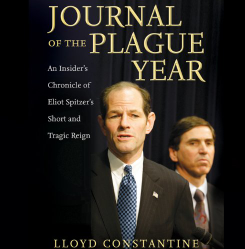America’s economic divide grows at an alarming pace
The advice that “you can never be too rich or too thin” attributed to Wallis Warfield Simpson, the late Duchess of Windsor, for whose love King Edward VIII gave up his throne, seems to resonate with some very wealthy cultural and educational institutions, even and especially at a time when lots of American are finding it hard to just get by.
The San Francisco “Exploratorium” is a case in point. It recently reopened after spending $300 million to upgrade a wonderful facility that for decades had introduced children to “hands on” scientific inquiry.
What could possibly be wrong with that? Well, the TV cameras covering the event found a dissenter, who wondered out loud why just 1 percent of that money could not have been invested in setting up interactive science museums in poor communities around the Bay Area. He claimed that this tiny fraction of the money could establish 100 such facilities each costing just $30,000. Anyone who has seen a good high school science teacher work her magic with basic equipment knows this to be true.
The Exploratorium story links to another involving a museum closer to home, Manhattan’s Museum of Modern Art, also known as MoMA. The museum has decided to unleash a wrecking ball on a distinguished piece of architecture built only 12 years ago, that sits in the middle of MoMA’s large and constantly expanding West 53rd Street campus, adjacent to Rockefeller Center. In 2011, MoMA bought this building from the bankrupt American Folk Art Museum. Think Henry Darger, think Natalie Merchant. MoMA’s trustees and director explained that the beautiful, expensive and almost new structure doesn’t fit with the Modern’s motif and development plan — and so must go. After a torrent of protests, not about the waste but the destruction of fine architecture, MoMA’s trustees said they might reconsider.
Some may wonder how and if these institutions have so much money, too much money. I recall a meeting for alumni of a very prestigious college in this region, where a price of $85 million was placed on a new library. It would be constructed on a site then occupied by a beautiful library that was built after most of the alumni attending this fundraiser had graduated.
They were told that modern libraries were different, mostly devoid of physical books. The school, then recently named “America’s most wired” even with its “obsolete” 20-something-year-old library, would have to level the structure and build an entirely new one. This was done, and there now sits the new house of books, mostly without them, stored as they are in an off-campus facility.
The social stratification of Americans into the 1 percent and the 99 percent, into haves and nots, is occurring at an even more alarming pace in our cultural and educational institutions. These true tales are the cultural side of the emerging picture of America.
The three institutions focused upon are distinguished and incredibly great at what they do. But, it is also true that the museums, once free, now charge a hefty price for admission and the school — always expensive — now charges twice its former tuition in real dollar terms.
These elite institutions are typical of the cultural and educational “haves,” open to all but largely serving clientele that also have. And no matter how much money they raise or charge, they need more for reasons similar to those stated above, such as exhibiting the small portions of their permanent collections that they hang at any given time.
MoMA no doubt will soon seek and receive donations to warehouse and show some of the more than $1 billion in art just donated to it by Leonard Lauder, the scion of Estee Lauder’s cosmetics dynasty.
At the same time, we increasingly turn our backs on less fortunate people and institutions. We say no to people who need their underwater mortgages and student debt restructured.
We say no to citizens and cultural institutions in the bankrupt city of Detroit. The Detroit Institute of Art may be forced to sell off its collection and close, just as the Fresno Metropolitan Museum of Art and Science was forced to in 2010.
The big and new idea being peddled by the Republican Party is that helping the unfortunate will further hurt them because they created their predicament, in whole or in part, and must get themselves out of it in order to become strong and independent. This novel GOP idea was also totally new when portrayed in Dickens’ novels. And, by the way, who is making wealthy cultural institutions live on a budget or with the consequences of their own short-sighted decisions?


0 Comments